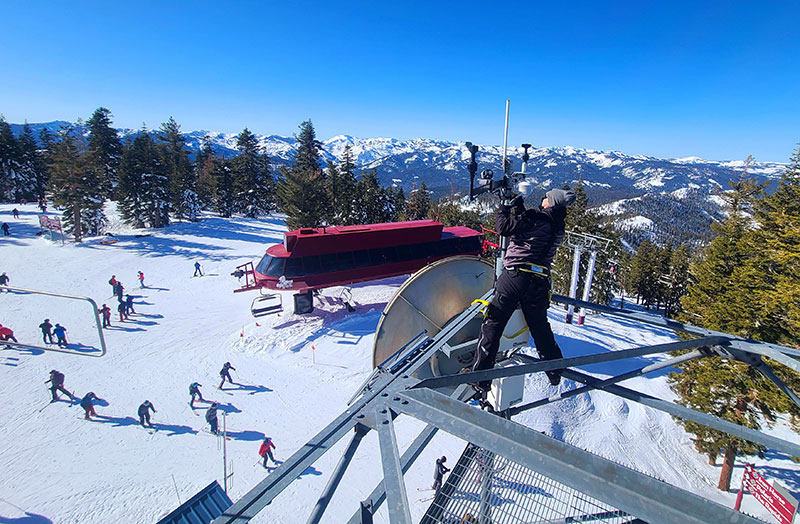CLOUD SEEDING PROGRAM
Frank McDonough, M.S. | Program Director
What is Cloud Seeding?
Clouds are made up of tiny water droplets or ice crystals that form when water vapor in the atmosphere cools and condenses around a tiny particle of dust or salt floating in the atmosphere. Without these particles, known as condensation or ice nuclei, raindrops or snowflakes cannot form and precipitation will not occur.
Cloud seeding is a weather modification technique that improves a cloud’s ability to produce rain or snow by introducing tiny ice nuclei into certain types of subfreezing clouds. These nuclei provide a base for snowflakes to form. After cloud seeding takes place, the newly formed snowflakes quickly grow and fall from the clouds back to the surface of the Earth, increasing snowpack and streamflow.

Making it Snow: A Brief History and Review of the Science Behind Cloud-Seeding
Scientists can now regularly harness cloud moisture and pull it to Earth, bringing water to parched communities and landscapes around the world.
How we Cloud Seed
The DRI Cloud Seeding Research Program uses ground-based generators, which are designed and built by DRI and can be operated remotely.
Most cloud seeding operations, including those run by DRI, use a compound called silver iodide (AgI) to aid in the formation of ice crystals. Silver iodide exists naturally in the environment at low concentrations, and is not known to be harmful to humans or wildlife.
When storm systems move through one of our cloud seeding project areas, a solution containing a small amount of silver iodide is burned from ground-based generators or released from aircraft. Upon reaching the cloud, the silver iodide acts as an ice forming nuclei to aid in the production of snowflakes.
DRI’s cloud seeding operation generally runs during the winter season of November to May, when storm systems are actively moving through our project areas. During dry winters when storm systems are absent for long periods, cloud seeding cannot occur, because cloud seeding requires the presence of moisture-filled clouds.
DRI’s team of experts includes meteorologists who monitor the weather throughout the season for appropriate cloud seeding conditions. Cloud seeding does not occur during times when additional precipitation would be problematic, such as times of high flood risk or during busy holiday travel periods.
Benefits of Cloud Seeding
Cloud seeding is used all over the world as a method for enhancing winter snowfall and increasing mountain snowpack, supplementing the natural water supply available to communities of the surrounding area.
The effectiveness of cloud seeding differs from project to project, but long-term cloud seeding projects over the mountains of Nevada and other parts of the world have been shown to increase the overall snowpack in the targeted areas by 10% or more per year (Manton and Warren 2011, Huggins 2009, Super and Heimbach 1983).
At a study site in the Snowy Mountains of New South Wales, Australia, a five-year cloud seeding project designed by DRI resulted in a 14 percent increase in snowfall across the project area. This enhanced snowfall was shown to be a result of cloud seeding, at the 97 percent confidence interval (Manton and Warren 2011).
In Wyoming, a 10-year cloud seeding experiment in the Snowy Range and Sierra Madre Range resulted in five to 15 percent increases in snow pack from winter storms (Wyoming Water Development Office 2015). And older research from a cloud seeding program in the Bridger Range of western Montana showed snowfall increases of up to 15 percent from cloud seeding using high altitude remote-controlled generators (Super and Heimbach 1983). These generators are similar to the cloud seeding methods used by DRI’s modern cloud seeding projects.
